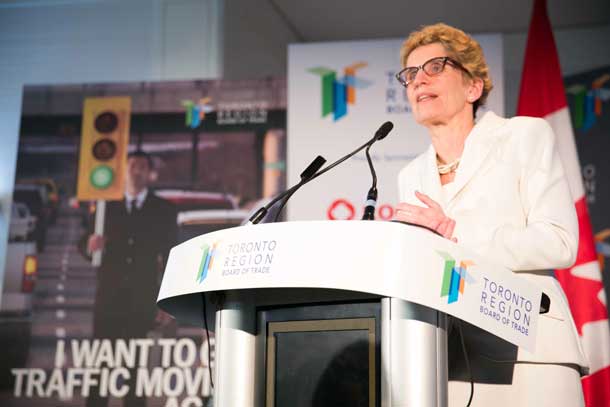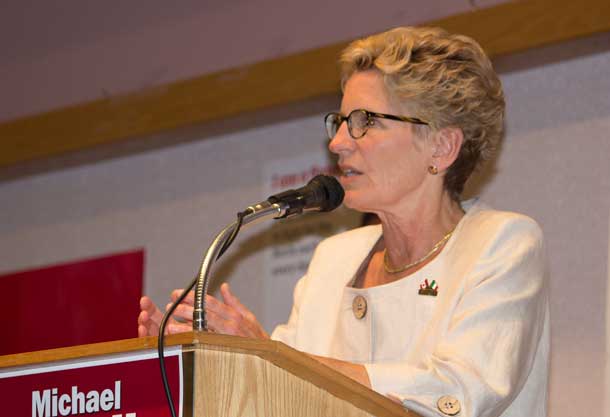
Ontario Debt Crisis Looms
TORONTO – POLITICS – Ontario’s Auditor General has released the latest findings of her annual look at Ontario’s fiscal picture. Of particular concern was Ontario’s provincial debt. Auditor General Bonnie Lysyk states, “Ontario’s debt continues to grow faster than the province’s economy, which could have negative implications for the province’s finances”.
The AG states that “The government should provide legislators and the public with a plan to manage debt in line with the government’s net-debt-to-GDP target of 27%”.
There are implications from this report that will likely have trickle down effects on municipalities. As Ontario moves to get spending down, and to pay down debt, there will be less money for other projects across the province.
The picture could be bleaker than the Auditor General has stated, today, The C. D. Howe Institute reports, “Ontarians carry a $1.19 trillion fiscal burden – the higher tax bill for increased healthcare costs over the next half-century – and should prepare now for the coming demographic squeeze, says a report released today from the C.D. Howe Institute. In “Managing Healthcare for an Aging Population: Ontario’s Troubling Collision Course,” authors William B.P. Robson, Colin Busby and Aaron Jacobs recommend that Ontario pre-fund selected healthcare services and benchmark against other provinces to get better health bang for their tax bucks”.
“Ontario spends less per capita than any other province on hospitals and has relatively low administrative costs,” says Busby. “By contrast, Ontario spends more per capita on physicians. These gaps between Ontario and the national average are large.” Report co-author William B.P. Robson added that, “at present, we know more about healthcare costs than we do about its quality: For example, Ontarians may get appropriately greater value from their physicians than other provinces do – but we do not know.”
In Question Period in the Ontario Legislature on Tuesday, Premier Wynne said, “We welcome accountability, and the existence of the Auditor General and the work that she does is the definition of accountability. In fact, because we welcome accountability, that’s why we are moving to pass Bill 8 today, which I believe will provide unprecedented transparency”.
Jim Wilson, the interim Progressive Conservative leader stated, “The fundamental takeaway from the Auditor General’s line-by-line investigations is that Ontario cannot afford to go on like this. From patients, to pensioners, from families with children, to our most vulnerable residents in need – hardworking taxpayers are not getting value for the essential public services they rely on daily.”
Wilson added, “What is further troubling is how spending continues to skyrocket on this government’s watch while accountability and service delivery continue to plummet, Wilson said, citing that by 2017-2018 Ontario’s net debt will have reached $325 billion – nearly $23,000 for every Ontarian. “The Auditor General now joins the Conference Board of Canada, the Ontario Chamber of Commerce and the PC Caucus, who have all raised serious red flags about the Liberals’ out-of-control spending.”
“Now more than ever, we need to safeguard investments in hospital beds for seniors and residential services for those with development disabilities,” said the MPP for Simcoe-Grey.
Andrea Horwath, Leader of Ontario’s New Democrats, said that the Auditor’s General’s scathing annual report reveals that the Liberal government is again wasting public dollars, providing less public service, failing to protect basic public safety, and neglecting to provide a balanced plan to reduce the province’s debt. “The Liberals are wasting more money, providing less services, and leaving people unsafe. Ontarians rely on their government to provide basic protections and invest public dollars wisely on public services. Today’s report shows the Liberals are failing on all counts,” said Horwath.
Auditor General Says Money Could be Scarce
“No matter which measure you use—total debt, net debt or accumulated deficit—this is a concern for the province for several reasons, including how much money will be available for providing services to Ontarians in future years after interest on debt is paid,” Lysyk said today following the release of her Report.
Lysyk recommends that the government work towards developing a long-term total debt reduction plan that is linked to meeting its target of reducing its net debt-to-GDP ratio to its pre-recession level of 27%.
In Chapter 2 of the 2014 Annual Report, Lysyk says Ontario’s net debt—the difference between the prov- ince’s liabilities and its financial assets—was more than $267 billion as of March 31, 2014. Net debt has been growing in recent years because of higher deficits (the difference between what a government spends in a year, and how much it takes in) and increased spending on infrastructure (the attached Exhibits Demonstrating Ontario’s Debt Burden shows the related trends).
Although the government projects that it will not have a deficit in 2017/18, until then, it will still need to borrow to finance annual deficits, fund infrastructure investments and re-finance existing debt.
“We project that by the time the annual deficit is eliminated in 2017/18, the net debt will stand at about $325 billion,” Lysyk said. “That’s about $23,000 for every single resident of Ontario.
“Ultimately, the question of how much debt the province should carry and the strategies the government could use to pay it down is one of government policy,” she added. “However, this should not prevent the government from providing information that promotes further understanding of the issue and clarifies the choices it is making or will make to address the province’s growing debt burden.”
Consequences of high debt include:
- the “crowding out” of other spending—by 2017/18 the government expects to spend nearly one out of nine dollars of revenue on servicing debt when in 2007/08, only one out of twelve dollars of rev- enue collected was required to service debt;
- greater vulnerability to a rise in interest rates, which have been at historically low levels over the past few years—should there be a spike in interest rates, the government would have considerably less flexibility to provide public services, because a much higher proportion of its revenue would ulti- mately be required to pay interest on the debt, as was the case a decade ago; and
- a possible downgrading of the province’s credit rating, which would lead to higher future borrowing costs.






